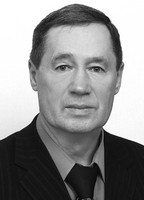Junior rhythmic gymnasts' jumping ability progress tests
Фотографии:
ˑ:
Teoriya i praktika fizicheskoy kultury №4 2017, pp.86-88
Dr.Hab., Professor O.I. Zagrevskiy1
Postgraduate E.V. Beznosikova1
1Tomsk State University, Tomsk
The article considers some issues of the 6-10 years-old junior rhythmic gymnasts’ jumping ability progress tests. The article demonstrates that the recent studies including the junior rhythmic gymnasts’ jumping ability progress tests give the means to duly manage the education and training process. Further solutions may be found if due priority is given to the relevant age-specific training when certain physical abilities of the athletes are most sensitive to modification and excelling practices. A prime objective of the study was to obtain and analysie the junior rhythmic gymnasts’ jumping ability progress test data.
Statistical data generated by the study demonstrates the junior rhythmic gymnasts’ jumping ability progress being age-specific with the highest progress being normally attained by the 8-9 years of age with this progress component accounting for above 50% of the total long-term growth as verified by the progress tests. The age groups of 6-7 and 7-8 year-olds were tested with the lowest progress rates estimated at 2-3% only.
Keywords: progress, motor qualities, jumping ability, tests.
References
- Bleer A.N., Laptev A.I., Levushkin S.P. Upravlenie fizicheskoy podgotovkoy vysokokvalifitsirovannykh bortsov greko-rimskogo stilya na osnove dannykh kompleksnogo kontrolya [Management of physical training of highly skilled Greco-Roman wrestlers based on comprehensive monitoring data]. Vestnik sportivnoy nauki, 2013, no. 2, pp. 14-19.
- Godik M.A., Skorodumova A.P. Kompleksny kontrol v sportivnykh igrakh [Complex control in sports games]. Moscow: Sovetskiy sport publ., 2010, 336 p.
- Zagrevskiy V.O. Modelnye kharakteristiki fizicheskoy podgotovlennosti kak faktor upravleniya trenirovochnym protsessom yunykh gimnastov. Dis. kand. ped. nauk [Model characteristics of physical fitness as factor of young gymnasts' training process management. PhD diss.]. Omsk, 1999, 174 p.
- Zagrevskiy O.I., Zelenkina I.N. Faktornaya struktura fizicheskoy podgotovlennosti yunykh sportsmenok 5-10 let v khudozhestvennoy gimnastike [Factor structure of physical fitness of junior female athletes aged 5-10 years in rhythmic gymnastics]. Fizicheskaya kultura: vospitanie, obrazovanie, trenirovka, 2010, no. 5, pp. 38-41.
- Shilko V.G. Fizicheskoe vospitanie studentov na osnove lichnostno-orientirovannogo soderzhaniya fizkulturno-sportivnoy deyatelnosti [Physical education of students based on personality-centered physical culture and sports activity]. Tomsk: Tomsk State University, 2003, 196 p.



 Журнал "THEORY AND PRACTICE
Журнал "THEORY AND PRACTICE